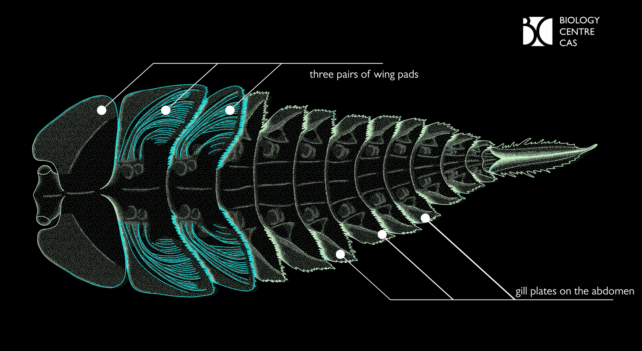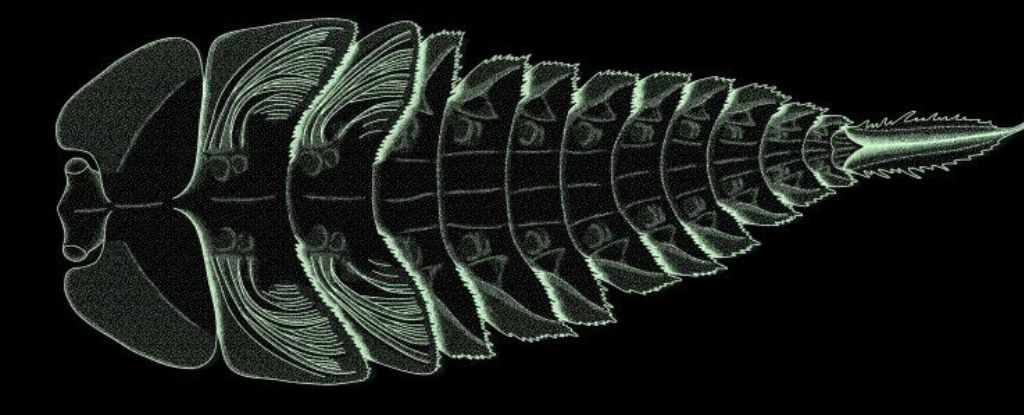The first animals to fly on Earth could have very well evolved wings from their gills.
A team of researchers from the Czech Republic and Germany have analyzed the prehistoric fossils of flying insects from roughly 300 million years ago and identified wing- and gill-like structures that look remarkably similar.
The discovery suggests that some of the first winged insects were aquatic or semi-aquatic as larvae, and the results could help solve one of the greatest mysteries bugging evolutionary biologists today: Where did insects get their wings?
“Although our fossils certainly do not represent the ancestor of winged insects –they are larvae, and the adults of this group already had fully functional wings – it is still a relatively ancient group of insects,” explains entomologist Pavel Sroka from the Czech Academy of Sciences (CAS).
“Given the fact that the larvae of other ancient insect taxa such as mayflies and dragonflies are also aquatic, it supports the possibility that the aquatic environment played an important role in the very beginnings of the evolution of winged insects.”
Obviously, life in the sky is a world away from life in the water, and yet, in the evolutionary timeline of insects, there seems to be an invisible thread connecting the two habitats.
Historically, most discussions on winged insects have assumed their ancestors were terrestrial, but recent genetic and fossil evidence suggests that the first insects may have resembled aquatic or semi-aquatic crustaceans.
As such, one hypothetical route suggests that insect wings evolved from limb-like appendages, while another holds that they evolved from gill-like appendages.
These competing theories are sometimes known as the “flying squirrel” and the “flying fish” theories, but there is also a third hypothesis where a fusion of leg and gill structures both contribute to the evolution of wings – a weird squirrel-fish hybrid, if you will.
The problem with proving any of the theories correct is that ancient insect fossils are extremely rare to find. What’s more, it is often assumed that the way these creatures developed as larvae hints at their evolution, even though there is little evidence to suggest that is the case.
Nevertheless, supporting genetic studies show that both the gills and wings of juvenile mayflies share similar developmental origins.
Today, modern crustaceans breathe through their exoskeleton, but the larvae of mayflies, dragonflies, damselflies, and many more insects associated with the aquatic habitat, breathe through gills on their abdomen.
Now, a fossil analysis of insect larvae from around 300 million years ago hints at how these structures can become wings.
The insect fossils representing various stages of development were found in a rock formation in Germany that dates back around 300 million years.
As larvae, the creatures look a bit like trilobites. At such an early developmental stage, the species, called Katosaxoniapteron brauneri, possesses a fringe of lateral outgrowths, or ‘flaps’, which appear suited to an aquatic lifestyle. Both the top and bottom flaps look remarkably similar and show filamentous papillae associated with respiration.
In adulthood, however, the flaps closest to the head turn into wings.

Sroka and his team argue that their results provide “strong support for the idea that wings evolved from precursors of ancestral gills.”
“The first forms of flattened projections on the thorax, which gave rise to later wings, could thus have arisen as organs for breathing,” says Sroka.
But far more evidence is needed to prove that hypothesis, which is still in its infancy. It was only around 2010 that scientists came to realize that insects and crustaceans were closely related, genetically speaking.
The life of the aquatic ancient insect remains a mystery to be solved.
The study was published in Communications Biology.





